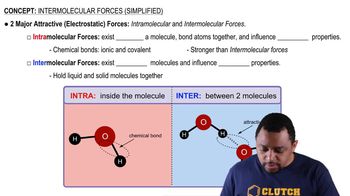Draw the condensed structural or line-angle formula for each of the following:
c. methyl propyl ether
 Verified step by step guidance
Verified step by step guidance Verified video answer for a similar problem:
Verified video answer for a similar problem:



 :34m
:34mMaster Rules for Naming Ethers Concept 1 with a bite sized video explanation from Jules
Start learning